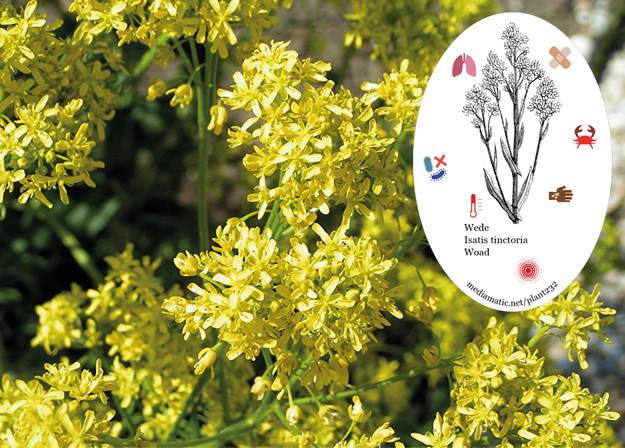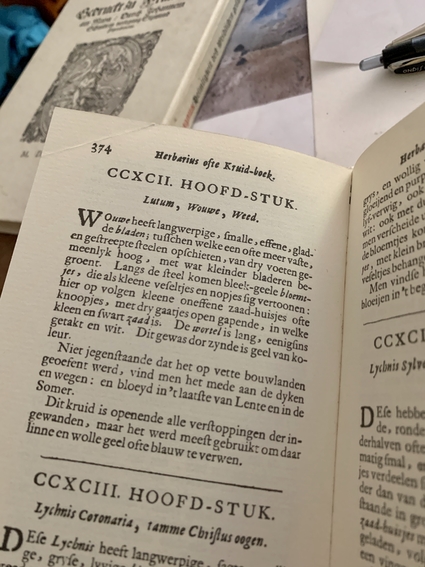Woad is a member of the Brassicaceae (crucifer) family: the leaves are bitter and considered astringent. Woad has been used in traditional European and Chinese medicine for centuries. It is taken internally to treat a wide range of disorders including meningitis, mumps and influenza. It can also be applied externally in a poultice to the area surrounding the spleen. Recently woad has been found to be a source of diindolylmethane (DIM). Diindolylmethane is a compound found in cruciferous vegetables. In laboratory experiments with animals it has been found to reduce cancers and inflammation. Promising research into DIM's potential as a positive agent in the healing and prevention of breast and prostrate cancers linked to oestrogen metabolism is currently under way.
In ancient times, woad was an important source of blue dye and was cultivated throughout Europe for that purpose. It was eventually replaced by the more colourfast Indigo (Indigofera tinctoria) until the early 20th century when synthetic blue dyes were developed that replaced both woad and Indigofera tinctoria. Woad leaves react to rubbing and crushing by producing a bitter tasting liquid that serves as a natural defense. This liquid fermented in stale urine for several weeks turns into blue woad pigment that floats on the service of the urine vat. Textile soaked in this substance turns blue once it is exposed to oxygen and sunlight.
Woad is the main character in the installation Tumulus by Ruchama Noorda. Find more information about the work here.

